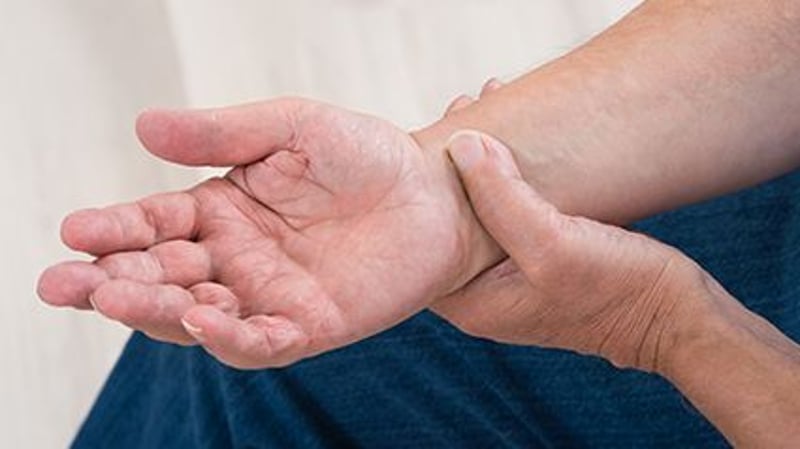Manténgase sano!

- Cara Murez
- Posted September 25, 2023
Your Wrist Could Give Clues to Future Health
One day, it may be possible to monitor people for risk of disease through continuously measuring skin temperature.
Researchers have found in a new study that wrist temperature is associated with future risk of disease.
"These findings indicate the potential to marry emerging technology with health monitoring in a powerful new way,"said senior author Dr. Carsten Skarke, an adjunct associate professor of medicine at the Perelman School of Medicine at the University of Pennsylvania.
"For example, there are many who have smartwatches around their wrists, which already include skin temperature sensors," he said in a school news release. "In the future, this information may be leveraged with their care teams as a digital biomarker, to understand their risk to develop certain diseases and to navigate treatment or preventative care options."
Continuous wrist temperature monitoring can shed light on future risk for such common problems as type 2 diabetes, high blood pressure, liver disease and kidney failure.
Previously, disrupted temperature rhythms had been linked to a handful of conditions, such as metabolic syndrome and diabetes.
To study this, more than 92,000 U.K. Biobank participants wore sensors that monitored changes in their wrist temperatures for one week.
The day-to-night changes included both circadian and sleep-wake behavior, along with the impact of environmental conditions, such as reduction of core temperature during periods of sleep.
The findings showed that the daily peaks and valleys seen in a person's wrist temperature curve might matter for health. The flatter these changes were, the higher the risk for chronic diseases.
Researchers found that up to 73 different disease conditions were signiï¬cantly associated with decreased temperature rhythm, meaning that participants with a smaller day-night difference in their readings showed were at future risk for these diseases.
The authors saw a 91% higher risk for nonalcoholic fatty liver disease; a 69% increased risk for type 2 diabetes; a 25% increase for kidney failure; a 23% increase for high blood pressure; and a 22% increase for pneumonia.
The authors compiled the data into a searchable website called the Temperature Biorhythm Atlas.
"While temperature rhythms are only one aspect of one's circadian health, these findings add to a growing body of work that shows the importance of maintaining healthy circadian habits, such as the consistent timing of sleep and physical activity,"said lead author Thomas Brooks, a research associate in translational medicine and therapeutics at Penn.
Future studies could expand on this work with additional data from new smartwatch-based measurements and include younger or more diverse participants, the authors said. It could also do additional investigations that target temperature rhythms, to better understand the underlying biology.
Study support was provided by the U.K. Biobank, the U.S. National Center for Advancing Translational Sciences, the U.S. National Institute of Mental Health and the American Heart Association.
Study findings were recently published in Nature Communications.
More information
The Agency for Healthcare Research and Quality has more on monitoring patients remotely.
SOURCE: Perelman School of Medicine, University of Pennsylvania, news release, Sept. 21, 2023
